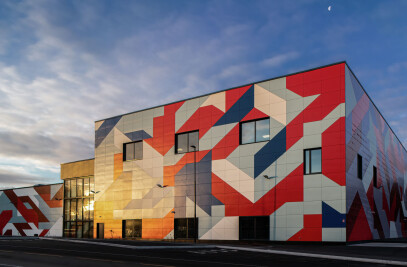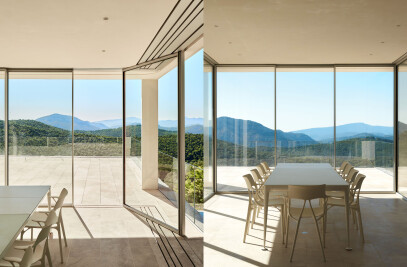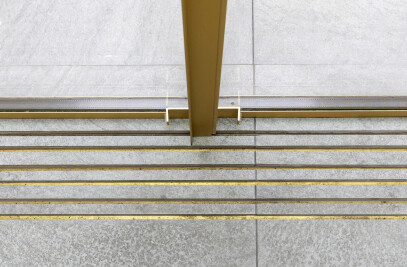This project by Bajet Giramé Architects aims to enhance, and exaggerate, the courtyard-house character of a summer residence from the sixties on the Mediterranean coast of Spain. From wide and sunny, to intimate and shady, the use of coves, topography, loggias and gardens offer a spatial continuum that blurs the lines between indoors and outdoors, providing a landscape of vitality and delight.

The pre-existing wall enclosure in the garden, which distinguishes two areas of the surrounding patios, is echoed throughout the site. The result is a gregarious and playful matrix of exterior and interior rooms, each with varying dimensions, character, light and temperature – yet all interconnected by both old and new arches.

The pre-existing house was based on traditional, more closed ideas of domestic privacy. A new steel structure merged into the window frames, allows for a new more open living, dining, kitchen and loggia area. Further to this, the pre-existing long corridor has been blurred, now connecting with the living area. The corridor also now features, at both ends, generous pivoting doors, which provide special continuity.

The façade openings are super-imposed with different steel layers, navigating the relationship between interior and exterior. On the outside, perforated sheet metal forms a sliding gate that makes it possible to sleep with the windows open. Inside, rectangular folding window frames allow for full exterior opening.

Beautiful hand-crafted Valencian terracotta tiles are used throughout in a move that unifies garden and house, interior and exterior. At the same time, the tile allows for hierarchy through its patterning, which differentiates different rooms and edges, buildings and walkways, shelves and benches.

The house is passively designed to avoid the need for air conditioning in the summer months. Following standard construction methods, the existing pitched roof is perched on a dense matrix of walls which provide a ventilated cavity while greatly increasing thermal comfort. This thermal comfort is improved upon with cross-ventilation strategies and sun protection. Hard surfaces are limited to increase greenery, which further helps to improve atmospheric humidity and perceived ambient comfort.


































